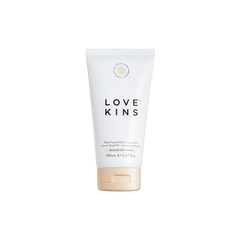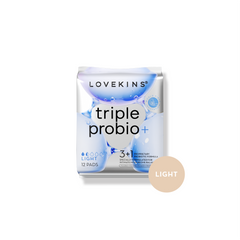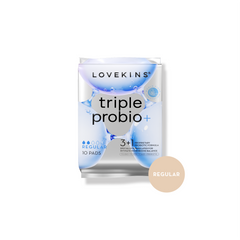This blog is written by Aliza Carr from Bumpnbub – Midwife, Perinatal Mental Health Specialist and new mum.
Placing your baby skin to skin with you or any other family members increases their bond and has many physiological and biological responses for your baby. When a baby is skin-to-skin with you, they have unrestricted access to your breasts and is best practice to assist with positive breastfeeding outcomes. You and your partner will experience some magical moments holding your baby skin to skin, feeling them move, breathe, wriggle, and stare up at you. Let’s touch on who, when, how and why to do skin-to-skin with your baby!
Who can make skin to skin baby contact:
Anyone can do skin-to-skin with the baby, with your consent. It will mostly be you and your partner that does skin-to-skin, although it’s a lovely thing for siblings to do with their new little brother or sister, especially in those first 6 weeks. Other family members such as grandparents, aunty or uncle and close friends can also undertake skin-to-skin.

When to have skin to skin with baby:
Skin-to-skin can be done at any time with your baby, the first time is commonly at birth for at least the first hour of life known as the golden hour. Your partner can also do skin-to-skin with the baby at birth after they have had a feed. After this time, skin-to-skin can be done for any reason; lovely cuddles, when the baby is upset and needs calming, to help improve breastmilk production or to assist the baby in orientating to the breast before breastfeeding.
If your baby is in a neonatal nursery you can still have skin-to-skin if your little one is well enough. Research has proven that skin-to-skin improves survival rates of premature and low birth weight babies, lowers their risk of hospital-acquired infections and increases the length of time they are breastfed for. Even if your baby is in an isolette incubator, skin-to-skin can be more effective than an incubator for temperature regulation. Nothing can replace human contact for your newborn baby.
How to have skin to skin with baby:
Your healthcare provider will generally place your baby directly on your chest at birth and cover you both with a towel or blanket, and this is where they will stay for the ‘golden hour’. If you are wanting to do skin-to-skin in the postnatal period, simply undress your baby so they are only in a nappy and remove your top so your chest is bare or wear a loose top so you can place your baby underneath it. Lay your baby in a prone position, which is their tummy facing downwards in the middle of your chest and turn their head to face the side. Get comfortable, lay a blanket over you both and relax snuggling your little one.
Why skin to skin with baby:
There are many reasons why skin-to-skin is important for you and your baby, here I've outlined the main 4 benefits of skin-to-skin.
1. A surge of oxytocin to increase bonding between baby and caregiver
Having skin-to-skin with your baby is more than just a cuddle. When your baby is placed skin-to-skin with you or your partner, you will both experience a rush of the love hormone, oxytocin.
Skin-to-skin provides physical and emotional benefits, as well as increasing the bond between you and your baby. It is the beginning of emotional attachment, where your baby will learn you are the place they will feel calm and safe. Skin-to-skin can even help when other people are bottle feeding your baby to increase that bond and familiarity between them. When skin-to-skin releases the feel-good hormone oxytocin it also improves a mother's mood and decreases postnatal depression. Oxytocin also has physiological responses in helping your uterus to contract back down which in turn reduces bleeding and helps you recover postpartum.
2. Increase breastfeeding outcomes
Skin-to-skin contact is one of the most important practices for the outcome of breastfeeding as it releases prolactin and endorphins. After skin-to-skin contact, it is more likely that your baby will follow behaviours that result in self-attachment to the breast. After birth, your baby will have a period of relaxation before they instinctively move towards the breast where they should self-attach and begin to feed. It is important not to rush this process, as it can take some time for your little one to familiarise before latching on. If they can orientate themselves with your breast and self-attach, they will likely repeat this at subsequent feeds, resulting in fewer breastfeeding problems. Your baby being close to you when having skin-to-skin also helps you to stay in tune with your baby regarding the signs and cues they are giving.
Another amazing benefit of oxytocin is it helps to increase your body’s ability to make more breastmilk and assists in the likelihood of your baby breastfeeding longer. Skin-to-skin increases the production of colostrum, therefore assisting in bringing in your milk quickly to help the baby gain weight. It is important to make note that all babies generally enjoy and benefit from skin-to-skin, whichever method you choose for feeding, breastfed or formula-fed, skin-to-skin can still be undertaken and has amazing benefits.
3. Physiological benefits for baby
The benefits of skin-to-skin for your baby are endless, one of the best benefits for them is that it makes them feel safe, warm and calm. You are their world and with you is where they want to be. Ultimately, skin-to-skin helps them adapt to life in the outside world because it resembles the closest place to the womb. The stress hormone, cortisol, has also been found to be lower in babies after at least 20 minutes of skin-to-skin.
Skin-to-skin also regulates physiological needs; temperature, breathing, heart rate and glucose levels. If you are nice and relaxed, your baby will feel that and relax too, which will regulate their breathing and heart rate to a perfect rhythm. Skin-to-skin is one of the most recommended actions to take if your baby is cool and you’re trying to stabilise or increase their temperature. Your body is the perfect place to warm them up. Skin-to-skin also helps fulfil your baby's biological needs such as smell, touch and listening.
4. Colonise your little one with natural good bacteria
Another amazing benefit of skin-to-skin for your baby is the colonization of normal flora and microbiome, or friendly skin bacteria, from your body to theirs. Microbiome can be transferred to your baby from your vagina if you have a vaginal birth, but also transferred during skin to skin. This microbiome or friendly skin bacteria plays a role in immune system development and protecting your baby from infections. Anything that touches your baby’s skin, like lotions or body washes, also impacts the microbiome colonization. Therefore, doing regular skin-to-skin in the first 6 weeks of life and limiting any products used on your baby will assist the colonization of healthy bacteria from your skin to theirs.

Tips for skin to skin:
- Get comfortable by laying on your bed, couch or a recliner chair to make you relaxed when cuddling
- Be prepared; before skin to skin, it’s a good idea to go to the toilet, grab your phone, drink or snacks to have close so you can have uninterrupted time together
- Ask your midwife to show you the best position to do for skin-to-skin; normally it’s a ‘sniffing’ position, upright, tummy down in the middle of your chest
- Easy accessibility to your bare chest is the best for skin to skin
- Have your baby in only a nappy with a blanket ready to put over you both once he/she is skin to skin
- Remember baby knows your voice and that is their comfort, so while skin to skin it is lovely if you talk, sing or read to your baby to help build that bond for both of you
- You can include your preference for un-interrupted skin to skin after your baby is born in your birth plan
- If you are feeling tired, it may be best to avoid skin-to-skin so you don’t fall asleep and risk dropping the baby.
Enjoy doing skin-to-skin with your little one, this time certainly goes by quickly!
This is general advice only and does not replace the need for medical advice.













